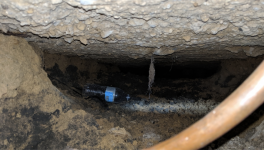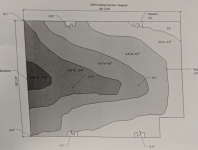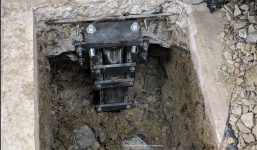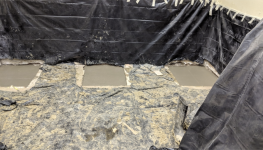Just speaking from my experience in DFW. Most if not all municipalities require residential foundation plans to be stamped by a PE there. Of course all commercial stuff was stamped by a PE. I have met many, that were clueless as to the realities of why slabs fail. They are very concerned about heaves, which are actually pretty rare. Don't get me wrong, I have met some PE's that are amazing and extremely knowledgeable, but way too many others are clueless or downright willfully negligent. I remember the foundation repair association putting on some data that 1 outta 3 slab foundations in North Texas had failed in the previous 25 years. I know there were over 150 foundation repair companies in DFW in 2015.
To many of the PE's are often focused on the stiffness of the slab, so they increase the number of grade beams and/or post tension cables. These foundations fail too. But instead of getting a slab crack and having one corner of the house settle, the whole house tilts. There was a neighborhood in Carrollton Texas called Castle Hills were this was an epidemic. The builders hired a friend of mine's company to tunnel under the slabs and install piers to pier up the entire house. I think the average cost was around $40,000 per home.
Long story short, I have never seen a slab with preconstruction piers installed to a prescribed death actually fail. In a new construction neighborhood, you could get a geotechnical report and install piers on a 2000 sf slab for around $3000, or build a crawl space for $5,000-$7,000 more. Instead they spend nearly as much if not more money stiffening the slab or pulling out clay and bringing in fill dirt.... That fill dirt is much more permeable and allows the deeper clay to now have moisture changes, not to mention the fill is subject to erosion and literally washes out from under the slab foundation since most production homes fall to include gutters and drains and just let the heavy rains come off the eaves I to swails between the homes.
Here's the void under a slab where fill dirt washed away. This was a 12-15 year old house in atown that has required PE's to stamp foundations for years before it was built. One of the guys put the water bottle there for scale:
View attachment 563129
Here's a commercial example of horrible engineering:
These images show a 4 year old 20,000 sf building in Las Colinas, Texas. There is a drawing called a contour diagram I made of the foundation by taking elevation readings on a 10' grid. The building had settled 14.5" in 4 years and was deemed unsafe for tenants once the elevator got stuck in its shaft. $1.1 million to install piers and use high density polyurethane foam to lift and stabilize the building... We targeted getting it to 2.2" out of level, but only got it to 4.5" when the concrete grade beams on the foundation start showing signs of near failure during lifting.
View attachment 563109
View attachment 563110
View attachment 563112
Based on the soil complex in the area, this building should have probably had 30-40' deep piers bearing the weight of the building and significant precon drainage improvements to prevent this disaster. Instead an ignorant if not downright crooked engineer rubber stamped a cheap/crooked builder's plans to cut some corners... Installing the piers before construction would have cost $75,000 or so and likely something similar for a better drainage plan.
As far as I know, the engineer carried zero blame in the lawsuits and the excavation company was getting targeted for not compacting soil as well as they should have.
Not to be left unsaid, a very high percentage and I mean very high percentage of the engineers names/stamps on foundation plans I would consider shoddy were Indian sounding names.
 ). I'm in the $225k range, we are in the market for a house, not a condo. I see where one of the Morgan built properties is for sale (off of John Wesley Rd) for a good price. These houses are 20ish years old at this point, anyone know how they are holding up? They don't look great from the outside, but they are rentals. Any other good buys in this price range?
). I'm in the $225k range, we are in the market for a house, not a condo. I see where one of the Morgan built properties is for sale (off of John Wesley Rd) for a good price. These houses are 20ish years old at this point, anyone know how they are holding up? They don't look great from the outside, but they are rentals. Any other good buys in this price range?



